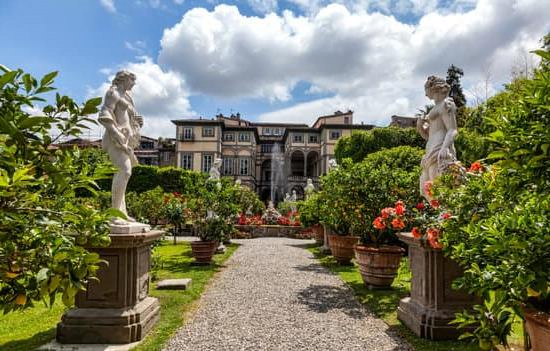
Cold Hardy Flower Bulbs For Outdoor Planting
Buying flower bulbs to grow and plant is an exciting adventure that starts in the fall and continues through the Spring. Dutch flowering bulbs are often delivered to American vents from the month of September for autumn planting.
Amaryllis flower bulbs increase the showiest blooms and are pre-cooled to induce fast flowering in 3 months following containerizing. Dutch bulb importers of Amaryllis provide a bigger assortment of choices and many more bulbs to lure the buyers. The African American growers of Amaryllis bulbs seem to be enslaved into the Dutch Amaryllis importers supply system, but the African flowers that appear on the Amaryllis stalks are exceptional in several respects to the Dutch Amaryllis.
The African Amaryllis blooms seem to offer clearer colors, more streamlined blossom stalks, leaves which grow as the blossoms appear, and much more blossom stalks and develop from bulbs that are smaller. Double quantities of blossom on Amaryllis flowers are quickly growing to be somewhat popular options to purchase because the petal count is raised to 12, rather than six, which rise on many Amaryllis bulb flower stems, appearing quite like a massive carnation flower.
Daffodil flower bulbs are all significant Dutch bulbs for fall planting, due to their reasonable market price, the ease of planting, as well as the growth of flower stalks from the Spring at a variety of colors of yellow, orange, white, along with the pink daffodil. Daffodil bulbs are easy to naturalize to blossom again each year.
Tulip bulbs are a native flowering plant of Turkey, however long past tulips have been hybridized to a large commercial scale by Dutch bulb manufacturers. The expense of Dutch tulips hasn’t been cheap to purchase; however, tulip buyers now still adore the spring blossom colors of crimson, orange, pink, yellow, blue, purple, white, and bi-color. Cities and government associations frantically purchase tulip bulbs in large amounts throughout winter seasons to increase in amazing landscape screens for the Spring.
The Canna lily rhizome was considered to be tropical in character, with hardly any cold solid immunity. Bartram also found that the native Canna flaccida, developing near Fort Frederica, Georgia, situated on the Isle of St Simon’s. Canna lily colors are wide, red, pink, white, lavender, orange, yellow, speckled, bi-color, along with many others.
A few Canna flower growers plant cannas with variegated foliage forms, which are striped with green, red, yellow, white, and pink. Dutch vendors of canna rhizomes still flooding retail box shop, garden facilities with”Victorian-age” canna bulbs of inferior grade; types that had diminished, “run out,” 50 decades back, and they ought to have been ceased rather than introduced to buyers in a garden center nursery.
Ginger lily rhizomes grow blossoms with delicate, delicate blossoms – lots of looking like mini orchid flowers. The foliage of Ginger lilies is variable, growing in colors of yellow, green, maroon, and stripes of white or yellow.
Daylilies are now not bulbs but rhizomes but are marketed widely as daylily bulbs. Countless named types of Daylily bulbs are readily hybridized by legions of backyard gardeners, and also the choice blossom and improvement quality are totally astonishing. The advancement has led to developing dual blossom daylily, mini daylily, cold-hardy daylilies, and streamlined noodle or big clumping daylily plants. It’s surprising to realize these many colors – white, red, orange, yellow, pink, purple, and bi-color originated from a native plant -a seedy, yellow daylily growing wild on the woods border.
Crinum Lily bulbs provide into an adventuresome hobbyist or gardener a classic garden bulb choice that’s been reintroduced as enhanced crinum clones from the colorful inductiveness of chemist, Lester Hannibal of Fair Oaks, California. Lester Hannibal backcrossed and intercrossed many indigenous crinum lily species to offer you the gardener an outstanding, cold, rugged crinum, an”interspecific hybrid,” which may be expanded as far north as Philadelphia, PA, zone 6, and also to endure intense freezes of below zero temperatures.
Lots of Lester Hannibal’s crinum blossom hybrids were a re-creation of outdated however popular industrial crosses which were created by Cecil Houdyshel from the 1930s but mostly improved upon by the first”Powellii” types with clear, pink and white colors, a rise in the number of blossoms in the umbel, prolonged flowering periods, an elimination of drooping blossoms, an intensification of odor and premature flowering following sprouting from the germination of this seed.
The”wine and milk” crinum lilies were called since the flowers were white (milk) and wine blue colors. Crinum colors are burgundy, pink, red, white, greenish-yellow, and orange. Crinum bulbs grow by expanding into clumps of numerous offsets in the fundamental mother bulb, or simply by planting the seed of a few cultivars or species.
-Unusual, Hard-To-Find Flower Bulbs of Merit- Lots of rare little blossom bulbs are inaccessible to purchase everywhere, except by potentially exchanging plants together with collectors and hobbyists. The Amazon lily, Encharist grandiflora, blossoms using six white, daffodil like petals, along with a green or shining yellow cup radiating from the middle. This delicate blossom can be recalled from days ago because of its lovely, charming fragrance.
The Bird of Paradise is famous for both tropical types, the Strelizia reginae, the very ordinary: brightly colored blossoms with crimson, red, and blue glaring blossoms, along with the Strelizia nicholae that develops big, showy, white flowers. The Blood Lily, Scadoxus mutliflorus, forms baby-head sized flowers with reddish filamented blossom and radiate delicate threads of crimson that are affixed to the middle of the blossom, ideal for container culture.
Clivia lilies, Clivia minata, are alternative heavy shade-requiring plants that create colossal clusters of orange blossoms, cup-shaped, with a yellow throat, and frequently will re-bloom a couple of occasions from big bulbs.
Lycoris is a magical group of flower bulbs called “Spider Lily,” and they blossom in floral colors of pink, yellow, white, and crimson, Lycoris Radiata, that’s the most commonly grown. The Pineapple Lily, Eucomis bicolor, develops into flowers that are shaped like mini pineapple fruits in colors of white and rusty-red.
Scilla flower bulbs are grown in massive quantities as bedding plants, so several Dutch varieties are little and make decent cut flowers, however, the very best cold hardy Scilla is your Scilla peruviana that creates and develops into luminous, purplish-blue blossoms that grow in addition to bedding plants, or containerized plants. Voodoo lilies, Amorphophallus bulbifer, are odd and bazaar leafy bulbous crops, both in foliage and blossom, with a suggestive appearance of snakes, cobras, and other vermin which could be lurking underneath the leopard-spotted menacing leaves.
Zephyranthes are known as”rain lilies,” and lightly blossom in colors of crimson, Zephyranthes Grandiflora; yellowish, Zephyranthes citrina; whitened, Zephyranthes Damasco; along with a mind-numbing variety of Zephyranthes bulb mongrels which are dispersed by a retired breeder at San Antonio, Texas, that apparently has nothing better to do, compared to paralyze all of the worlds earnest taxonomists to the job of building the documents of his Mexican-American bulb-children lineage to a shocking Encyclopedia book.

Welcome to my blog about home and family. This blog is a place where I will share my thoughts, ideas, and experiences related to these important topics. I am a stay-at-home mom with two young children. I hope you enjoy reading it! and may find some helpful tips and ideas that will make your home and family life even better!




